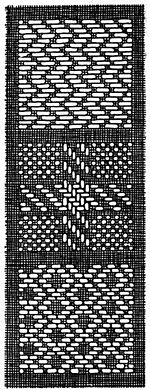


The straight or running stitch is the basic stitch in hand-sewing and embroidery, on which all other forms of sewing are based. The stitch is worked by passing the needle in and out of the fabric at a regular distance.[2] All other stitches are created by varying the straight stitch in length, spacing, and direction.
Some sources only use the term straight stitch to refer to the individual stitch or its family of related stitches,[3] while others use it interchangeably with or in place of running stitch.[4] Running stitch will never be used to refer to a single stitch since a single running stitch is a straight stitch.


Running stitches are most often not visible as they are used to close seams.[5]
Running stitch, Holbein or double-running stitch, satin stitch and darning stitch are all classed as straight or flat stitches. Backstitch is also sometimes included in this category.[6]
- ^ Christie, Grace (September 1906). "Chapter 9: Methods of Work (continued)". Embroidery and Tapestry Weaving. The Artistic Crafts Series of Technical Handbooks. New York: Macmillan. p. 198 – via Internet Archive.
- ^ "Running Stitch". Sarah's Hand Embroidery Tutorials. Retrieved 2020-05-11.
- ^ "Straight Stitch Family". Sarah's Hand Embroidery Tutorials. Retrieved 27 January 2021.
- ^ "CyberSeams". Retrieved 2021-01-27.
- ^ Reader's Digest Complete Guide to Needlework. The Reader's Digest Association, Inc. (July 25th 2008). ISBN 0-89577-059-8, p. 46
- ^ Enthoven, Jacqueline: The Creative Stitches of Embroidery, Van Norstrand Rheinhold, 1964, ISBN 0-442-22318-8, p. 29-46